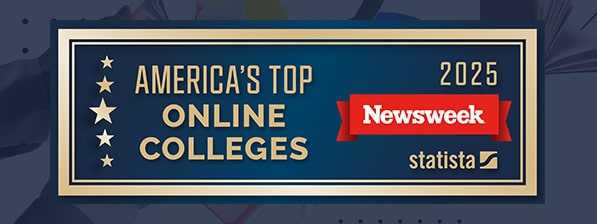If your company hopes to grow its business, you need more than just a good idea. It’s great if you have a product or service that everybody wants. But it’s tough to sell if people don’t know about it.
That’s where marketing comes in.
Marketing is something that’s continually changing. Once upon a time, a company’s marketing approach included an ad in a newspaper or magazine and maybe a television or radio commercial—the classic “offline” method.
Today’s marketing strategies have continued to explore new opportunities.
Marketing, like everything else, has become more dynamic and plugged in these days. Your strategy is no longer about maximizing one or two channels. Instead, you must leverage a host of various sources, many of which are online or have a digital component, to reach your target market.
Ultimately, marketing is about being where your ideal client is and connecting with them utilizing a multitude of different tools.
Let’s first take a look at the importance of brand strategy and then cover several strategies to help you engage with your audience and turn them into loyal customers.
Brand Strategy
Before employing specific marketing methods, it’s essential to grasp what it is you hope to achieve with your overall brand strategy. Commonly mistaken for straightforward business features like your logo, product or your company’s website, your brand encompasses much more.
Branding runs through every aspect of what you and your team do—from how you answer the phones to the design choices you make for your marketing materials to how well your product or service performs to the way you engage with clients.
Branding infuses both what you produce and how you make people feel when they interact with that output.
The most successful brand strategies include several core elements that inform every facet of your business.
Purpose
Sure, practically every company’s mission is to be profitable, but to have lasting success, your goal must go beyond dollars and cents.
Are you only wanting to sell a product, or do you want to enhance the lives of those who use it?
Do you want to grow your business or do you want to increase the way those who work for and with your company benefit from it?
The difference in approach may be subtle, but the lasting positive impact on your organization can be profound.
Example: Seattle-based Starbucks is, of course, all about coffee. But the worldwide brand strives to be more than just a coffee shop. With a socially conscious mission, Starbucks champions diverse initiatives that include sustainable coffee, meaningful employment, and stronger communities.
Flexibility
Markets are always changing. To keep up, your branding and messaging have to find new and innovative ways to appeal to an audience. That doesn’t mean you have to change your logo every 12 months (consistency is important too, as we cover next).
Discovering new angles to showcase your brand, partner with others or speak to your audience helps you reach new clients and keep things interesting for those who have already committed to your brand.
Example: Target has gone against the “online” grain and is rolling out a new small store concept in urban markets, where their standard, big-box footprint would be out of touch with the location’s density and local attributes.
Consistency
While flexibility is vital to staying relevant in a fast-changing world, you also want current and prospective customers to know who you are and the foundational values you represent. This is particularly important if you’ve been successful in carving out a niche in a competitive market and don’t want to alienate clients.
Make use of style guides that inform and standardize your look and messaging, regardless if you’re using it in on the web, through social media or in a physical store.
Example: Tech giant Apple is perhaps the Mount Everest of consistent branding. Everything from their products and the packaging they come in to their advertising to their corporate headquarters are always unmistakably Apple.
Engagement
Great product. Great message. And still no customers?
Products and services are rarely instant successes. Instead, successful brands figure out ways to connect with customers and create an emotional attachment that makes the buyer feel as if they are part of something bigger.
Recognize how your product or service enriches a user’s life and then play up that connection to generate more meaningful engagement with your customers.
Example: Coca-Cola’s bright, welcoming aesthetic inviting people to be part of their brand is well established. For the past decade, one of the world’s largest drink brands has taken this engagement to the next level with the simple, yet highly engaging “Share a Coke” campaign.
Consider some of the biggest brands in the world—Apple, Coca-Cola, Starbucks—and how recognizable their brands—and brand strategies—have become. Yet they continue to evolve in an attempt to reach more potential consumers.
You don’t need to be an international behemoth to employ a comprehensive and successful brand strategy. Simply by understanding who your company is, knowing what you offer and connecting with an audience who stands to benefit most, allows your brand to shine.
Five Modern Marketing Strategies
With that understanding of branding and overall marketing strategy, here are five modern methods that can enhance your brand and grow your business.
Lead Magnet and Content Marketing
It’s the most classic of starting points for all businesses—what solution does your product provide? The best lead magnets crystallize why your brand matters. Identify an audience’s problem or question and then present your case for not just being the answer but the only answer.
Lead magnets like ebooks, FAQs, checklists, surveys or guides are most useful when you use funnel marketing. This means you grab the prospect’s attention with something of value in exchange for their contact info. Then, you can continue connecting with them via other methods, drawing them further down the ‘funnel’ to eventually become a customer.
However, lead magnets can be more than just one-off content pieces to capture an email address—they are also effective as engaging, stand-alone marketing or promotional pieces.
Email Marketing
It may seem a little low-tech compared to some of today’s more advanced tools, but email remains a massively popular form of communication. If done well, it can provide an impressive ROI, or return on investment.
For example, HubSpot notes that for every dollar spent on email, you can earn $38 in return, which is a 3,800% ROI. And, more than 59% of marketers say that their biggest source of ROI is through email.
Those stats show that email has matured quite a bit in the past few years. The productiveness of your email marketing depends on your commitment to it.
Automate your email and customize responses based on the actions of your subscribers, such as when they click a link, navigate to a page, view an item or leave an item in their online cart. You can also personalize your content based on demographics and who they are, whether they are a visitor making a first-time purchase or a satisfied and returning customer.
This effort allows you to nurture relationships with your audience and provide touchpoints for them regardless of how they engage with your brand.
Social Media
For many firms today, their marketing begins and ends with social media. It’s easy to see why. Sprout Social indicates that social media continues to grow in the number of users and opportunities for engagement with both customers and non-customers. It seems that everyone engages with some form of social media and for your brand not to be involved in at least one platform is a huge missed opportunity.
Consider your audience to pick which social media platforms are best for your company. Consider having a business page on Facebook and including Facebook ads as part of your advertising strategy. In addition, consider joining platforms such as Snapchat, Twitter or Instagram, which can also produce valuable direct engagement for both B2Cs and B2Bs.
The crucial factor of social media is to be authentic. Many platforms are less about making a sale and more about being part of a conversation. Certainly, don’t be shy about promoting your products, services and solutions. But to find social media success, your organization’s voice must be genuine and focused on your audience’s experience.
Video Marketing
Would it surprise you to learn that YouTube is the world’s second most popular site—behind Google and ahead of Facebook? It’s also the second most popular search engine.
In other words, video is big. While no one expects you start producing 30-minute infomercials, taking advantage of video’s popularity and the boost it gives your SEO.
From product guides and demos to tutorials to two-minute industry-specific info pieces, developing a library of videos sets you apart from competitors while also building another engagement point for your audience. House those video libraries on both your website and a channel on YouTube to increase their exposure.
Influencer Marketing
Word of mouth has always been a reliable means of marketing for many industries. Unfortunately, the traditional method of creating buzz can take a lot of time and patience as you build a satisfied customer base willing to spread the word. Today, that doesn’t have to be the case anymore.
Influencer marketing is supercharged word of mouth with brands partnering with influencers to increase visibility among other circles of followers. If you think your business isn’t fit for this type of marketing, think again. Influencers are everywhere and are capable of moving the needle on practically any product or service.
For your company to see a big payoff, you’ll want to identify the right influencer for your brand and marketing strategy. Look for influencers who have a following similar to the type of audience you want to target. You don’t need to aim for the stars either. Micro-influencers reach thousands of individuals at a far lower entry threshold.
Final Thoughts
When it comes to researching and implementing your branding and marketing strategies, keep your audience in mind. No matter your branding and marketing approach, make sure to test and retest everything you do. By its very nature of convincing others to believe in your business and buy the product you’re selling, marketing is an inexact science.
Perfect it by understanding your audience as well as your company and its purpose, and then refine the message you want to convey. Leverage all of the channels at your disposal where your audience can be found to share that message and realize your organization’s true potential.
Grow in Practical Application With a Degree
Understanding the foundational concepts of marketing and brand awareness is helpful in whatever business-related industry you find yourself in. Grow in your understanding of core concepts like marketing through a business degree program at PGS. With a practical curriculum designed to help you meet your goals, you can add value to your organization and get to where you want to go in business success. Check out our business programs and connect with our enrollment team to learn more.











